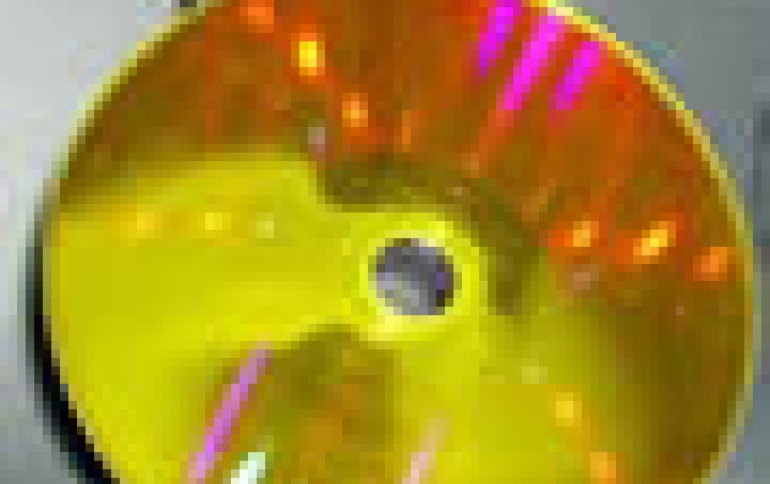
New Optical Element Could Accelerate Development of Holographic Systems
Optware prototyped a photopolymer hologram element that could make holographic players more affordable in the future.
The element is an essential part of Optware's Holographic Storage system, which is based on the company's proprietary technique called Collinear Holography.
The way holographic storage devices record is by splitting a laser into two beams. One beam, called the information beam, holds the encoded data and when the other beam, called the reference beam, crosses it at precise angles. At the point of intersection of the reference beam and the data carrying signal beam, the hologram is recorded in the light sensitive storage medium.
The collinear technology is a completely different concept compared to the 2-Axis methods used in other approaches of Holographic storage. Although all approaches are based on the so-called "volumetric recording technologies", which records data on discs in the form of laser interference fringes, in Optware's technique the information and reference beams are co-axially aligned. This makes the optical system as compact as those of DVD disk systems. And that in turn makes it possible to use the servo technologies of existing optical disk systems.
Japanese web-site Tech-On! reports that Optware's new experimental element may reduce the price of holographic players, replacing expensive Digital Micromirror Device elements (DMD) that were in use in such systems until now. The DMD element was priced at over $10,000 even for a playback-only machine in order to generate the reference light at the time of playback. The new hologram element can generate the reference light with an incident light because the pattern of the reference light is transferred to the element. Thus, the recording light can be played back without depending on DMD.
The new element also leads to a size reduction of players. The prototype element is 20-mm square, which is smaller than DMD.
In addition, the prototype element can increase the light use efficiency by about 10 times.
Optware has not given details about when it will implement of the new element in its future products.
The way holographic storage devices record is by splitting a laser into two beams. One beam, called the information beam, holds the encoded data and when the other beam, called the reference beam, crosses it at precise angles. At the point of intersection of the reference beam and the data carrying signal beam, the hologram is recorded in the light sensitive storage medium.
The collinear technology is a completely different concept compared to the 2-Axis methods used in other approaches of Holographic storage. Although all approaches are based on the so-called "volumetric recording technologies", which records data on discs in the form of laser interference fringes, in Optware's technique the information and reference beams are co-axially aligned. This makes the optical system as compact as those of DVD disk systems. And that in turn makes it possible to use the servo technologies of existing optical disk systems.
Japanese web-site Tech-On! reports that Optware's new experimental element may reduce the price of holographic players, replacing expensive Digital Micromirror Device elements (DMD) that were in use in such systems until now. The DMD element was priced at over $10,000 even for a playback-only machine in order to generate the reference light at the time of playback. The new hologram element can generate the reference light with an incident light because the pattern of the reference light is transferred to the element. Thus, the recording light can be played back without depending on DMD.
The new element also leads to a size reduction of players. The prototype element is 20-mm square, which is smaller than DMD.
In addition, the prototype element can increase the light use efficiency by about 10 times.
Optware has not given details about when it will implement of the new element in its future products.













